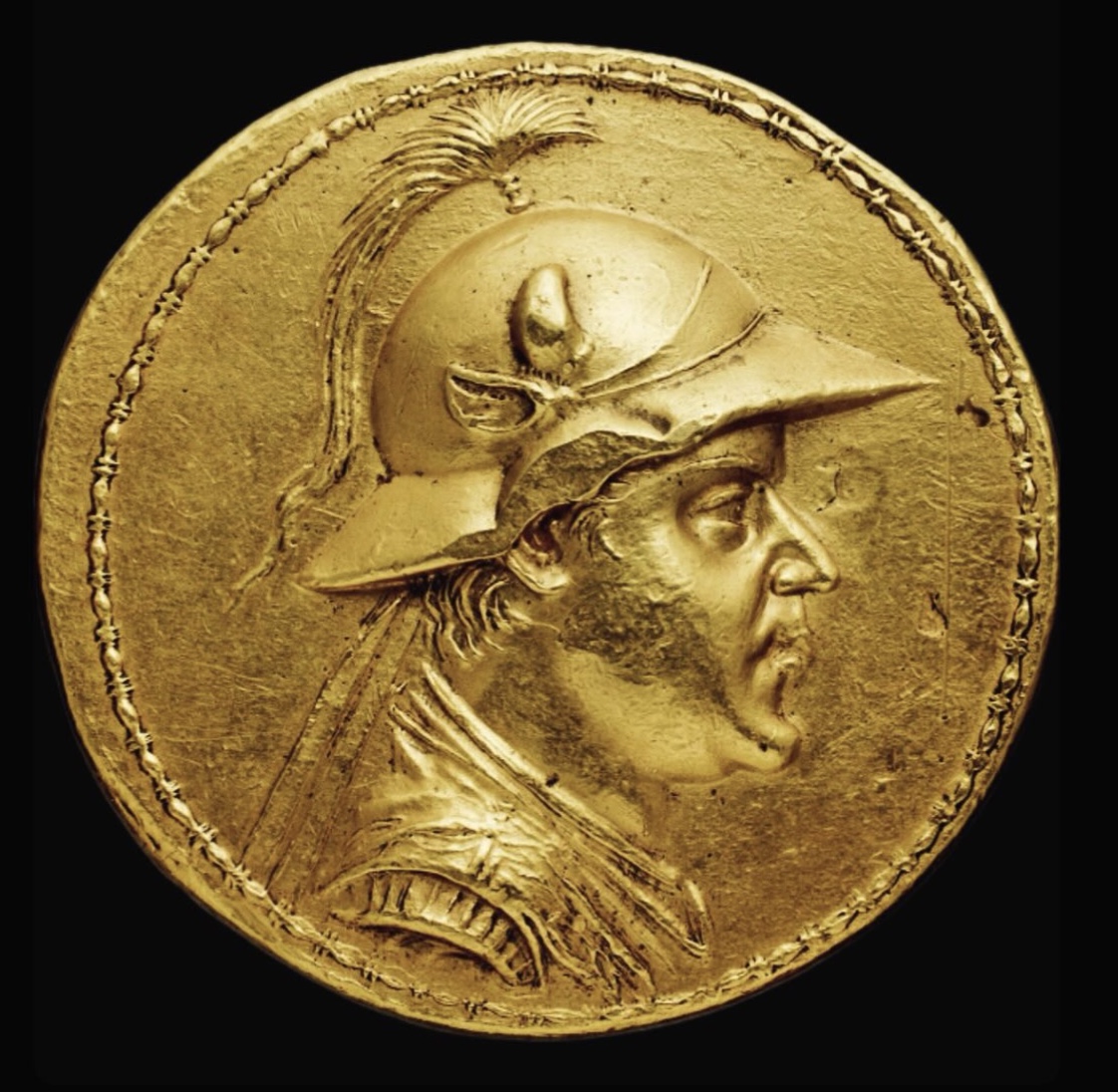Clocking in at 169 grams this coin is a whopper – one of the largest (if not the largest) denomination minted in antiquity. It was discovered in Bukhara (Uzbekistan), acquired by Napoleon III, and is one of a kind. The shrewd looking grump wearing the exciting helmet on the obverse is Eukratides I, a shadowy figure who ascended to dominance in Bactria by about 170 B.C.
To what extent the Diodotid dynasty he rehabilitated was a Seleukid offshoot is unclear, although Eukratides himself falls very much within the tradition of scheming upstart dynasts vying for power in the decades and centuries after Alexander the Great’s death. His ambitions transcended mere regional dominance: occupying the most problematic and far-flung region of Alexander’s carved up empire, Eukratides tangled with his big-name Hellenized neighbors (including Mithridates) and Indian ones as well. At the extent of his territorial expansion, he laid claim to lands as far as Gujarat.

Some of the coins struck under his reign are overtly multicultural, struck in Indian denominations and incorporating Kharoṣṭhī inscriptions. This one is not – it reads like a westward, sabre-rattling shout to the Mediterranean powers, proclaiming the kingdom’s immense wealth, Macedonian heritage, and unbridled military ambitions.
The helmet our fearless protagonist wears is unusual on coin portraits, but would have been immediately recognizable to his contemporaries as the sort (the ‘Boeotian’ type in modern parlance) favoured by Macedonian cavalry. Jauntily applied to its surface are a bull’s horn and ear and what could be more appropriate than this irascible powerhouse, sacred in the Hindu tradition and respected in the Greek?




